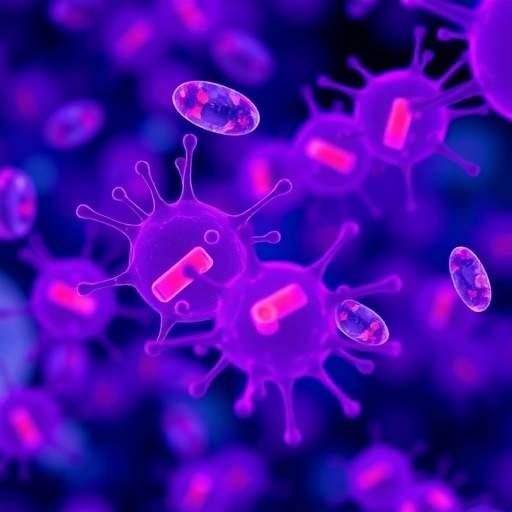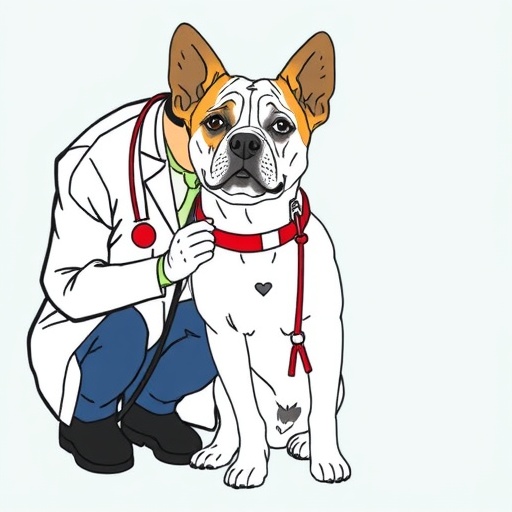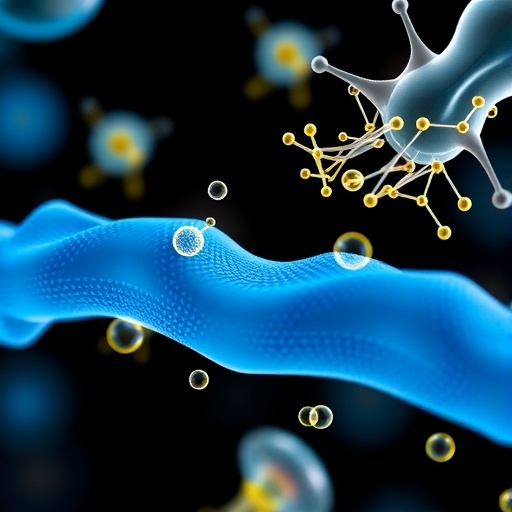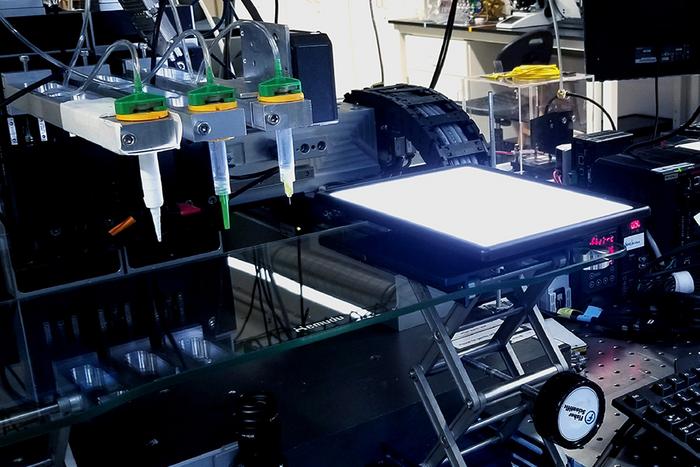
In a groundbreaking development poised to reshape the early diagnosis of sepsis-associated acute kidney injury (SA-AKI), researchers have unveiled a novel biomarker that promises to enhance patient outcomes through more precise and timely detection. Utilizing an innovative single urinary extracellular vesicle proteomics approach, the scientific team led by Li, Tang, Gu, and their colleagues has identified the complement receptor CD35 as a key molecular indicator directly linked to the pathological progression of SA-AKI. This finding, recently published in Nature Communications, opens up exciting new avenues for both clinical diagnostics and therapeutic intervention in a condition that continues to challenge intensivists and nephrologists worldwide.
Acute kidney injury occurring in the context of sepsis is a formidable clinical challenge, with high morbidity and mortality rates that strain healthcare systems globally. Despite advances in critical care, the capacity to predict and diagnose SA-AKI at an early, potentially reversible stage remains limited. Traditional biomarkers, such as serum creatinine and urine output, often lag behind the actual onset of renal injury, undermining timely intervention efforts. Against this backdrop, the ability to detect disease-relevant molecular changes non-invasively and with high specificity has remained a holy grail in nephrology and critical care medicine.
Extracellular vesicles (EVs), nano-sized lipid bilayer-enclosed parcels secreted by cells, have surfaced as promising reservoirs of biological information relevant to disease states. These vesicles carry proteins, nucleic acids, and lipids reflecting the physiological or pathological condition of their cells of origin. However, the complexity and heterogeneity of EV populations have hindered their utility in clinical diagnostics—until now. By deploying advanced single-vesicle proteomics techniques, the research team meticulously catalogued the protein content of urinary EVs derived from septic patients, correlating distinctive proteomic signatures with the presence and severity of acute kidney injury.
.adsslot_tB2OlAwhCj{width:728px !important;height:90px !important;}
@media(max-width:1199px){ .adsslot_tB2OlAwhCj{width:468px !important;height:60px !important;}
}
@media(max-width:767px){ .adsslot_tB2OlAwhCj{width:320px !important;height:50px !important;}
}
ADVERTISEMENT
Among the myriad proteins identified, the complement receptor CD35 emerged as a robust and distinguishing biomarker with a strong association to SA-AKI. CD35, a membrane-bound protein involved in the immune system’s complement cascade, plays a critical role in modulating inflammatory responses and immune complex clearance. Its detection within urinary EVs suggests localized complement activation and immune involvement in the kidney microenvironment during sepsis—a pathological insight that corroborates and extends previous findings on the immunopathogenesis of SA-AKI.
The researchers employed a sophisticated mass spectrometry pipeline tailored to analyze individual extracellular vesicles, overcoming the limitations posed by EV heterogeneity and enabling unprecedented resolution in proteomic profiling. This precision allowed for the discrimination of subtle changes in protein abundance and distribution that conventional bulk analyses might miss. By harnessing cutting-edge bioinformatics, the team validated the biomarker’s specificity and sensitivity, setting the stage for its potential translation into a clinical assay.
Importantly, the study’s cohort encompassed a diverse patient population across multiple intensive care units, reinforcing the generalizability of CD35 as a biomarker. Longitudinal sampling revealed dynamic shifts in urinary EV content corresponding with disease progression, further establishing temporal relevance that could aid in monitoring therapeutic responses. This temporal dimension distinguishes CD35 from many static markers and underscores the utility of urinary EV proteomics in real-time clinical decision-making.
Mechanistically, the link between CD35 expression and SA-AKI illuminates complex inflammatory signaling pathways activated during septic insult to the kidneys. Complement system dysregulation has been implicated in endothelial damage, tubular injury, and microvascular dysfunction—all hallmarks of SA-AKI pathophysiology. By integrating proteomic data with clinical parameters and experimental models, the authors elucidated the pivotal role of complement receptor-mediated immune responses, potentially uncovering novel targets for immunomodulatory therapy.
The implications of this discovery are manifold. Clinically, a non-invasive urine test based on CD35 detection could revolutionize how intensivists identify and manage patients at risk for acute kidney injury during sepsis. Early detection not only allows for rapid intervention to prevent irreversible renal damage but also facilitates patient stratification for targeted therapies, optimizing resource allocation in overwhelmed healthcare settings. From a research perspective, this proteomic methodology charts a new course for biomarker discovery in complex systemic diseases beyond SA-AKI.
Additionally, the integration of single-vesicle proteomics with urinary biospecimens represents a minimally invasive strategy, circumventing the challenges associated with classical biopsy-based diagnostics. This approach enhances patient comfort while enabling repeated monitoring, a critical advantage in managing dynamic conditions such as sepsis. Moreover, the use of urinary EVs leverages kidney-derived biological material directly reflective of renal tissue status, arguably offering higher specificity than systemic blood biomarkers.
Unraveling the complement receptor CD35’s role in kidney injury also prompts reconsideration of existing therapeutic regimens. Current treatments largely focus on supportive care and management of sepsis, with limited options specifically targeting kidney injury mechanisms. The identification of complement activation pathways as central to SA-AKI progression hints at the potential utility of complement inhibitors, some already under investigation in other inflammatory diseases, as adjunct treatments in sepsis-associated renal compromise.
Future research directions stemming from this work may involve the development of rapid point-of-care assays for CD35, streamlined to deliver critical diagnostic information within hours. Such tools could integrate seamlessly into intensive care workflows, guiding nephroprotective strategies and monitoring response to emerging therapeutics. Furthermore, extending proteomics analyses to other extracellular vesicle cargo, including microRNAs and lipid mediators, may supplement the biomarker panel to enhance diagnostic precision.
In the broader context, this study exemplifies the power of precision medicine enabled by technological innovation. By dissecting the molecular landscape of disease at the nanoscale, scientists can uncover biomarkers that not only aid diagnosis but also provide mechanistic insights driving novel treatment paradigms. The convergence of proteomics, bioinformatics, and clinical expertise embodied in this research sculpts a new frontier in sepsis and AKI management that could transform patient prognoses.
While challenges remain in translating laboratory findings to routine clinical practice, this advance in urinary extracellular vesicle proteomics represents a crucial step toward personalized medicine in critical illness. The ability to non-invasively track disease processes in near real-time will empower clinicians to optimize interventions and improve survival rates in sepsis-associated acute kidney injury—an achievement of immense translational potential.
In summary, the identification of complement receptor CD35 as a urinary extracellular vesicle biomarker for SA-AKI heralds a paradigm shift in diagnostic nephrology. The marriage of cutting-edge proteomics and clinical medicine detailed in this study offers hope for earlier detection, better understanding, and ultimately more effective treatment of one of the most devastating complications of sepsis. As researchers and clinicians continue to unravel the complexities of AKI, innovations such as this pave the way toward improved patient care and outcomes worldwide.
Subject of Research: Biomarker discovery for sepsis-associated acute kidney injury using urinary extracellular vesicle proteomics.
Article Title: Single urinary extracellular vesicle proteomics identifies complement receptor CD35 as a biomarker for sepsis-associated acute kidney injury.
Article References:
Li, N., Tang, TT., Gu, M. et al. Single urinary extracellular vesicle proteomics identifies complement receptor CD35 as a biomarker for sepsis-associated acute kidney injury. Nat Commun 16, 6960 (2025). https://doi.org/10.1038/s41467-025-62229-4
Image Credits: AI Generated
Tags: CD35 biomarker for SA-AKIcomplement receptor role in kidney diseasecritical care advancements in kidney injury detectionearly diagnosis of sepsis-associated acute kidney injuryenhancing patient outcomes in nephrologyextracellular vesicle analysis in nephrologyinnovative approaches to kidney disease diagnosisnon-invasive biomarkers for renal pathologynovel diagnostics for acute kidney injuryrenal injury and sepsis correlationtherapeutic interventions for acute kidney injuryurine proteomics for kidney injury






